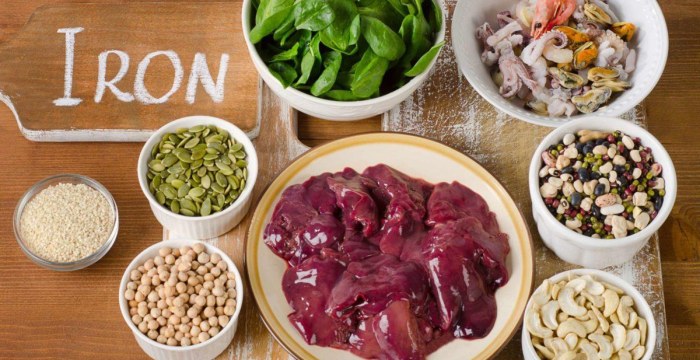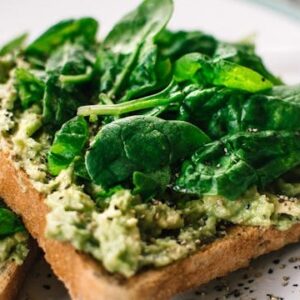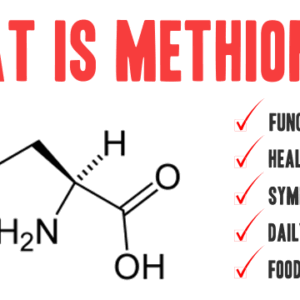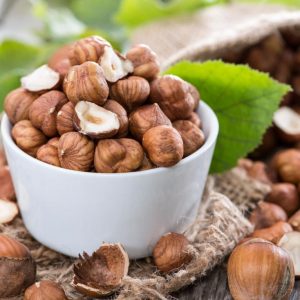The main task of the iron mineral in the human body is to carry oxygen. Iron, which is used in the production of red blood cells that carry oxygen to the whole body, also has a very important role for a healthy immune system. In case of iron deficiency, your body cannot produce enough red blood cells, which can cause iron deficiency anemia. If you have complaints such as fatigue, feeling of weakness, restless sleep, concentration disorders, you should check for iron deficiency with a blood test. You can meet your iron mineral requirement, which is one of the basic building blocks of the body, with iron-rich foods that you will include in your daily diet.
What is iron?
Iron is a key component of hemoglobin, which enables red blood cells to carry oxygen throughout the body and plays a key role in cell growth. Hemoglobin represents two-thirds of the iron in the body. The human body needs iron to perform many vital physiological functions. Iron is an essential element for all living organisms, as it participates in a wide variety of metabolic processes, including DNA synthesis and electron transfer.
It is an essential mineral required for the production of various enzymes in metabolic processes, the use of B vitamins, and the absorption of copper and calcium by the body. However, excess iron can form free radicals and cause damage due to its density in body tissues. Therefore, foods containing iron should be consumed in a balanced way.
Why is iron important for human health?
Iron deficiency can make you feel physically tired and weak, impaired mental functioning, and weakened immune system. Apart from that, it can cause shortness of breath, headache, irritability, dizziness or anemia.
In the case of more severe iron deficiency, called iron deficiency anemia, symptoms such as heart palpitations, brittle nails, pale skin, thinning hair strands, itchy skin, mouth sores, headache, loss of appetite or ulcers may develop. Menstruating women, especially those who do not consume foods containing iron, are at high risk of iron deficiency.
On the other hand, having too much iron in the body can poison some organs and even cause death. For this reason, it is essential for health to properly maintain the iron balance in the body.
What are the benefits of iron mineral?
- It has a positive effect on mental and physical performance by carrying oxygen to the brain and muscles.
- Without iron, the healing process cannot begin. Iron, which increases hemoglobin, which provides oxygen to damaged organs and cells, ensures that the body is less damaged in injuries or menstrual blood loss.
- It is a mineral that aids growth. It supports both the physical and mental development of children in the developmental period.
- Increases body resistance. It strengthens the immune system and increases the function of warrior cells against diseases.
- It reduces fatigue. It eliminates the feeling of fatigue and weakness that can affect the daily routine due to iron deficiency.
- Increases muscle strength. Muscle weakness and iron deficiency are correlated. Adequate iron levels provide the oxygen needed for muscle contraction. In addition, iron reduces the possibility of muscle soreness and inflammation of the muscles.
- It increases concentration. Studies have shown that cognitive levels decrease due to decreased iron in the blood. Adequate iron levels improve cognitive performance.
- It prevents bruising on the skin. The production and function of platelets, which control blood clotting, are affected by hemoglobin. Adequate iron levels can prevent rapid bruising on the skin.
- It supports good sleep. Studies show a link between iron deficiency and restless sleep, sleep apnea, and insomnia.
- Iron is also necessary for maintaining healthy cells and keeping skin, hair and nails strong.
Foods containing iron
Foods containing iron are divided into animal and vegetable: Iron from animal foods, known as “heme iron”, is found in meat and fish. While red meat and seafood are good sources of iron, many plant foods also contain plenty of iron.
Plant-derived iron is called “non-heme iron”; It is found in iron-fortified foods such as legumes, dark leafy greens, and breakfast cereals.
Heme iron is better absorbed than non-heme iron. Therefore, the recommended daily iron intake for vegetarians and vegans is 1.8 times higher than for meat eaters. The recommended daily amount for adult men and postmenopausal women is 14 mg, while for menstruating women this amount is 32 mg and for pregnant women 49 mg.
Shellfish

All shellfish are rich in iron. Oysters and mussels are particularly good sources of iron. The iron found in shellfish is a type of heme iron that is easily absorbed by the body. A 100 g serving of oysters can contain up to 28 mg of iron. However, the amount of iron in oysters is highly variable, with some types containing low amounts of iron.
All shellfish have high nutritional value and increase the level of healthy cholesterol in the blood. However, it is important not to overdo it because of the mercury and toxins found in some fish and shellfish.
Spinach
 Spinach is a dark green leafy plant that is low in calories, has fiber, vitamins, minerals and antioxidant properties. The vitamin C it contains helps the iron in spinach to be well absorbed. 100 g of cooked spinach contains 3.6 mg of iron. Spinach is also rich in antioxidants called carotenoids, which reduce the risk of cancer, inflammation and protect the eye from diseases. Consuming spinach with a healthy oil such as olive oil enables the antioxidants it contains to become active.
Spinach is a dark green leafy plant that is low in calories, has fiber, vitamins, minerals and antioxidant properties. The vitamin C it contains helps the iron in spinach to be well absorbed. 100 g of cooked spinach contains 3.6 mg of iron. Spinach is also rich in antioxidants called carotenoids, which reduce the risk of cancer, inflammation and protect the eye from diseases. Consuming spinach with a healthy oil such as olive oil enables the antioxidants it contains to become active.
Liver and other offals
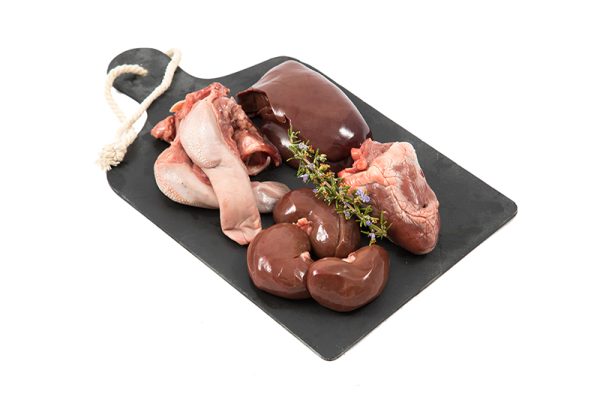 Among the highly nutritious offal meats, those with the highest amounts of iron are liver, kidneys, brain and heart. 100 g of beef liver contains 6.5 mg of iron. Organ meats are also rich in protein, B vitamins, vitamin A, copper and selenium. In addition, offal are among the sources of choline, which is an important nutrient for brain and liver health. Those with heart disease should pay attention to the consumption of offal, as the amount of cholesterol is high.
Among the highly nutritious offal meats, those with the highest amounts of iron are liver, kidneys, brain and heart. 100 g of beef liver contains 6.5 mg of iron. Organ meats are also rich in protein, B vitamins, vitamin A, copper and selenium. In addition, offal are among the sources of choline, which is an important nutrient for brain and liver health. Those with heart disease should pay attention to the consumption of offal, as the amount of cholesterol is high.
Legumes
 Beans, lentils, chickpeas, peas and soybeans are widely consumed legumes, which are an ideal source of iron, especially for vegetarians. Approximately 200 g of cooked lentils meets 37% of the recommended daily amount.
Beans, lentils, chickpeas, peas and soybeans are widely consumed legumes, which are an ideal source of iron, especially for vegetarians. Approximately 200 g of cooked lentils meets 37% of the recommended daily amount.
High in fiber, legumes are also rich in folate, magnesium and potassium. It can be consumed with foods high in vitamin C such as legumes, tomatoes, greens or citrus fruits to maximize iron absorption.
Red meat
 The fact that it contains a high amount of iron and that the iron it contains is easily absorbed by the body makes red meat a richer source of iron than white meat. Red meat, which is one of the easily accessible sources of heme iron, is potentially an important nutritional source for people with a predisposition to anemia. 100 grams of ground beef meets 15% of the recommended daily amount of iron. Red meat is also rich in B vitamins, zinc, selenium and high-quality protein. However, it is necessary to pay attention to the adequate and balanced consumption of red meat, since its saturated fat content is high.
The fact that it contains a high amount of iron and that the iron it contains is easily absorbed by the body makes red meat a richer source of iron than white meat. Red meat, which is one of the easily accessible sources of heme iron, is potentially an important nutritional source for people with a predisposition to anemia. 100 grams of ground beef meets 15% of the recommended daily amount of iron. Red meat is also rich in B vitamins, zinc, selenium and high-quality protein. However, it is necessary to pay attention to the adequate and balanced consumption of red meat, since its saturated fat content is high.
Pumpkin seeds
 Pumpkin seeds, which are a delicious snack, are among the foods rich in iron. Approximately 30 g of pumpkin seeds contain 4.2 mg of iron, which is 23% of the daily recommended amount. In addition, pumpkin seeds are a good source of omega 3 fatty acids, especially magnesium, vitamin K, zinc and manganese.
Pumpkin seeds, which are a delicious snack, are among the foods rich in iron. Approximately 30 g of pumpkin seeds contain 4.2 mg of iron, which is 23% of the daily recommended amount. In addition, pumpkin seeds are a good source of omega 3 fatty acids, especially magnesium, vitamin K, zinc and manganese.
Quinoa
 Quinoa is a grain-like plant. Quinoa seeds are rich in vitamins A, B, C, D and K, magnesium, iron, zinc, calcium, protein and phosphorus. 190 g of cooked quinoa contains 2.8 mg of iron, which meets 32% of the recommended daily iron requirement.
Quinoa is a grain-like plant. Quinoa seeds are rich in vitamins A, B, C, D and K, magnesium, iron, zinc, calcium, protein and phosphorus. 190 g of cooked quinoa contains 2.8 mg of iron, which meets 32% of the recommended daily iron requirement.
Quinoa, which has started to replace wheat and rice, which is one of the basic food sources, has both antioxidant properties and does not contain cholesterol and gluten.It makes a good alternative for people with celiac or other gluten intolerance.
Plant foods with the most iron
The fact that vegetarians or vegans can get enough iron daily depends on taking care of their diet. Although iron from animal sources is more easily absorbed by the body, daily iron needs can be met with vegetable iron sources by choosing the right foods.
- Dark green vegetables such as spinach, silver beets, and broccoli
- Lentils and beans
- Nuts and seeds
- Grains such as whole wheat, brown rice, and fortified breakfast cereals
- Dried fruit
- Sesame, hemp and flax seeds
- Cashews, pine nuts and other nuts
- Potatoes
- oyster mushroom
- Sugar cane
What to do to increase iron absorption?
- You can increase iron absorption by 300% by consuming foods containing “non-heme iron” together with foods containing vitamin C.
- Drinking coffee and tea with meals can reduce iron absorption by 50-90%.
- Soaking, sprouting, and fermenting grains and legumes can increase iron absorption by reducing the amount of phytates naturally found in these foods.
- Food prepared in a cast iron skillet tends to provide two to three times more iron than those prepared in pots and pans made with different materials.

